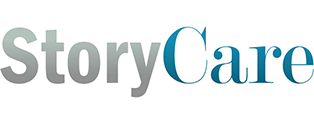Contributed by Steve Powell
Each of us spends varying amounts of time in front of the mirror each day preparing, comparing, and analyzing our appearance related to a standard we have set for ourselves. Seeing our reflection, we quickly receive feedback, make adjustments and perfect our look whether it is our hair, makeup or proper clothes.
This daily ritual is a just that—a ritual or habit; repetitive and automatic. We wouldn’t leave the house without our daily ‘reflection’. What other reflective activities can be used to produce continuous improvement? Effective, high performing teams use a very specific feedback event known as the ‘debrief’ to reflect past team performance and promote experiential learning. Debriefs are short-lived instances where teams face the ‘mirror’ (each other) to reflect valuable insights, knowledge, and shared understandings designed to optimize performance.
In a debrief team members get a chance to review decision-making, timing, efficiency, and effectiveness along with identifying opportunities for remediation, self-correction, and new goal-setting. Debriefs are designed to be diagnostic, solution-based, critical thinking exercises. Teams attempt to reconstruct the ‘who’, ‘what’, ‘where’ and ‘why’ of a past experience whether in real-time or in simulation. To properly diagnose, they must be aware and attentive to performance deviations. Furthermore, teams must be able to trust each other enough during debriefs to be able to openly critique, not criticize.
Discussing and learning from positive and negative behavioral experiences is an effective way for teams to perform new tasks and perfect difficult tasks in the future. In fact, reviewing the ultimate outcome of the experience may not be as beneficial as reviewing the process that led to the outcome since teamwork doesn’t happen without a ‘taskwork’ context.
The debrief can be practiced with another team directly observing actual events or simulated activities like high fidelity mannequin drills, role plays, or recorded vignettes. Simulated vignettes, either video, audio or case-based scenarios, offer teams the ‘psychologically-safe’ opportunity to objectively reflect on the performance of other teams before debriefing their own performance.
When used regularly, like the daily time in front of the mirror, debriefs are a powerful, yet simple tool for continuous team improvement. Start with three simple questions: What went well? What didn’t go well? And, what could we do better the next time? It’s only through reflection that flaws can be addressed and assets leveraged.
